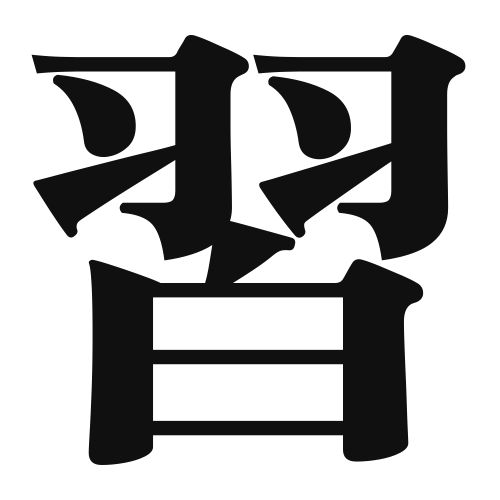1. Overview of Meaning
The kanji “習” (shū) means “to learn” or “to practice.” It conveys the idea of acquiring knowledge or skills through repetition and experience.
2. Formation and Radical
Formation of the Kanji: The kanji “習” is a phonetic-ideographic character (形声文字). It combines the radical for “insect” (虫) with the phonetic component “xí,” which suggests the sound and relates to the concept of learning from nature.
Radical: The radical of “習” is 虫 (mushi), which means “insect.” This radical often appears in kanji related to living things or nature.
3. Examples of Usage
Common Words and Phrases:
- 習慣 (shūkan) – habit
- 習得 (shūtoku) – acquisition of knowledge or skills
- 練習 (renshū) – practice
Example Sentences in Daily Conversation:
- 日本語を習っています。 (Nihongo o naratteimasu.) – I am learning Japanese.
- 毎日練習することが大切です。 (Mainichi renshū suru koto ga taisetsu desu.) – It is important to practice every day.
4. Synonyms and Antonyms
Similar Kanji:
- 学 (gaku) – to study; emphasizes formal education.
- 教 (kyō) – to teach; focuses on the act of imparting knowledge.
Antonyms:
- 忘 (waki) – to forget; the opposite of learning or retaining knowledge.
5. Cultural and Historical Background
Relation to Japanese Culture: The concept of “習” is deeply embedded in Japanese culture, where lifelong learning and continuous improvement are valued. This is reflected in practices such as “kaizen” (改善), which means continuous improvement.
Proverbs and Idioms:
- 習うより慣れろ (Narau yori narero) – “Get used to it rather than just learn it.” This emphasizes the importance of practice over mere theoretical knowledge.
